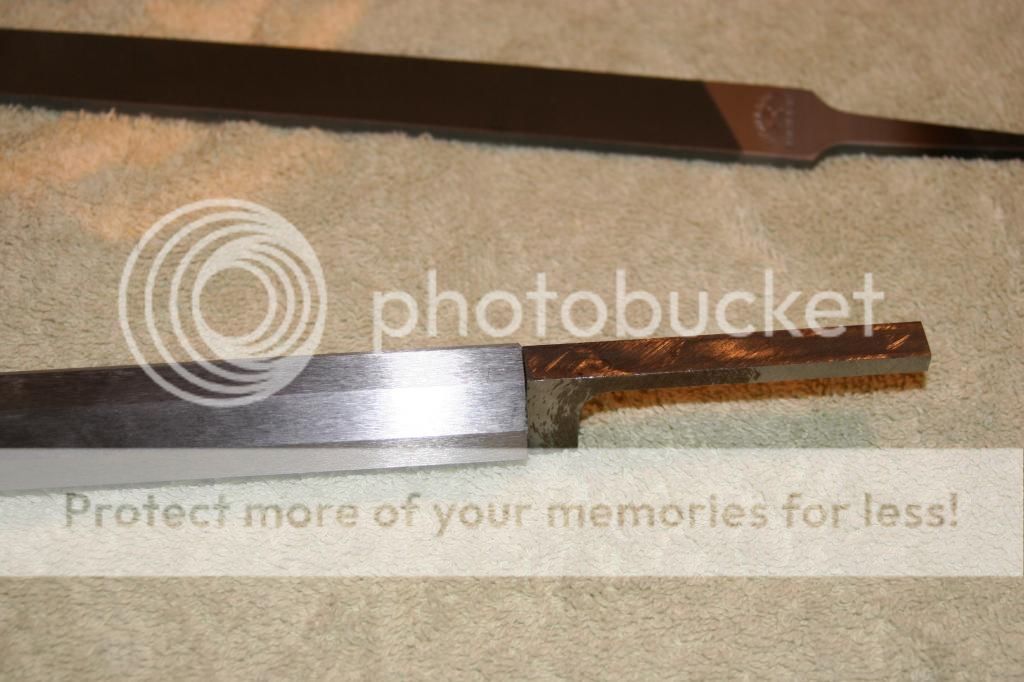jdkerstetter
69 Cal.
- Joined
- Feb 15, 2012
- Messages
- 3,029
- Reaction score
- 7
Great article. Print it and stick it in your new copy of The Gunsmith of Greenville County.
As far as the measurements are concerned, as I said before, you need a dial or digital caliper.
Notched plugs? What this refers to is a notch in the face of the plug to allow the vent hole to be drilled farther back on the barrel....a channel cut to allow a path to the powder.
Example; Take for instance the Sharon barrel I have with the 3/4" breech plug. Allowing 3/16" to the center of a vent liner, the pan on my lock would have to be 15/16" from the back of the barrel. This would look horrible once the gun was assembled as I would never get proper wrist architecture...there would be long hump behind the lock fence.
The alternatives are to shorten the plug and the end of the barrel to match (which I will do) or notch the face so the vent could be drilled back farther on the barrel to move the lock back.
The notch on the face of the plug would be in the threaded protion of the barrel....that and the channel itself would create a fouling trap and eventual gas checking of the plug/breech area.
Some will argue it was done on originals so it must be OK. Some still do it. Many do not. There's more information on it here and on other sites if you are inclined to look.
Enjoy, J.D.
As far as the measurements are concerned, as I said before, you need a dial or digital caliper.
Notched plugs? What this refers to is a notch in the face of the plug to allow the vent hole to be drilled farther back on the barrel....a channel cut to allow a path to the powder.
Example; Take for instance the Sharon barrel I have with the 3/4" breech plug. Allowing 3/16" to the center of a vent liner, the pan on my lock would have to be 15/16" from the back of the barrel. This would look horrible once the gun was assembled as I would never get proper wrist architecture...there would be long hump behind the lock fence.
The alternatives are to shorten the plug and the end of the barrel to match (which I will do) or notch the face so the vent could be drilled back farther on the barrel to move the lock back.
The notch on the face of the plug would be in the threaded protion of the barrel....that and the channel itself would create a fouling trap and eventual gas checking of the plug/breech area.
Some will argue it was done on originals so it must be OK. Some still do it. Many do not. There's more information on it here and on other sites if you are inclined to look.
Enjoy, J.D.






